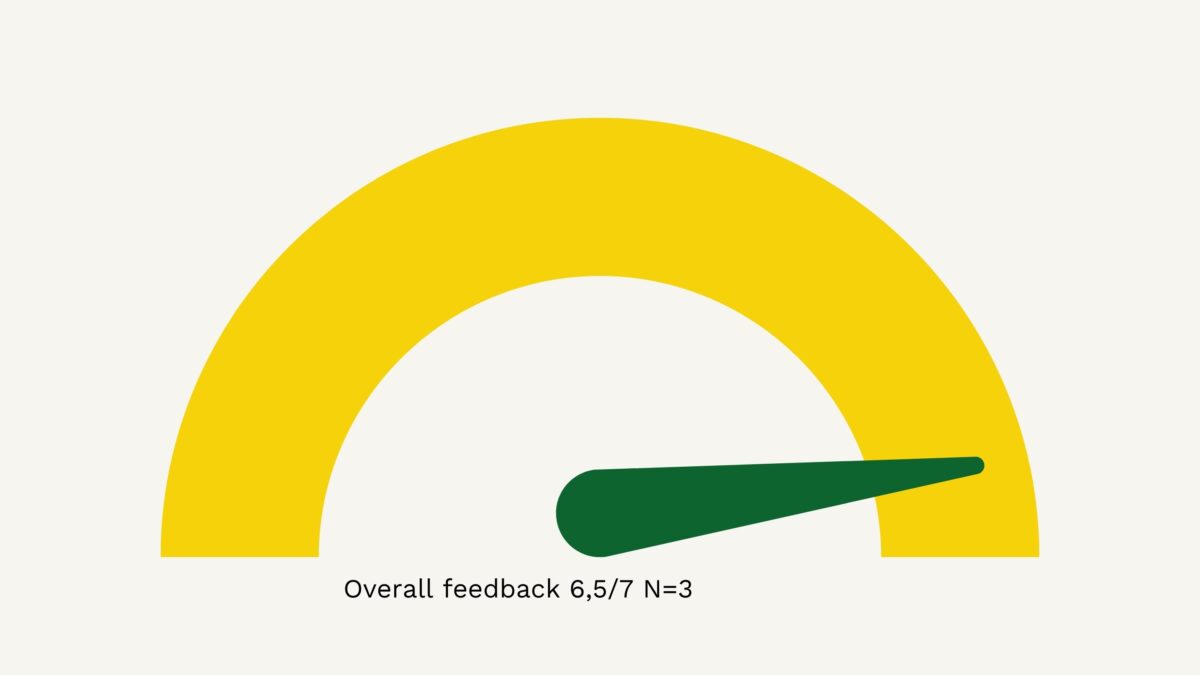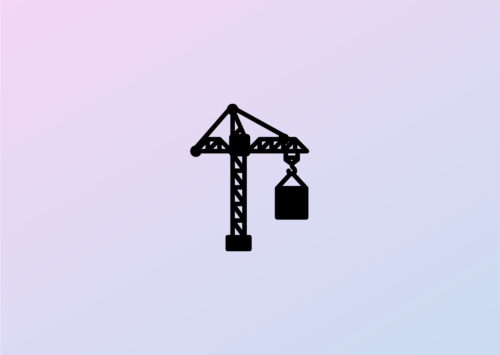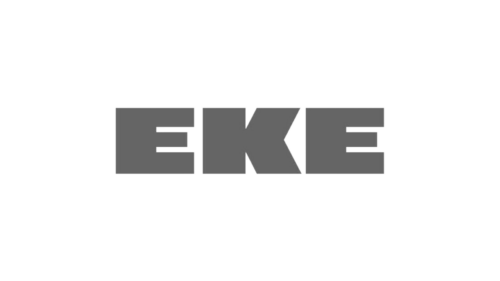Energy (electricity): Test strategy
In short
We have worked on software quality in the B2C and B2B interfaces of a major Finnish energy company, particularly in the development of customer and sales systems as well as in the optimization of building heating.
We are part of the client’s quality assurance team, where we collaboratively develop and implement the quality assurance strategy. At the same time, we work as independent quality assurance professionals within development organizations, supporting product owners in decision-making and assisting developers in testing.
Additionally, we created a test strategy for the client that aligns with their product development process.
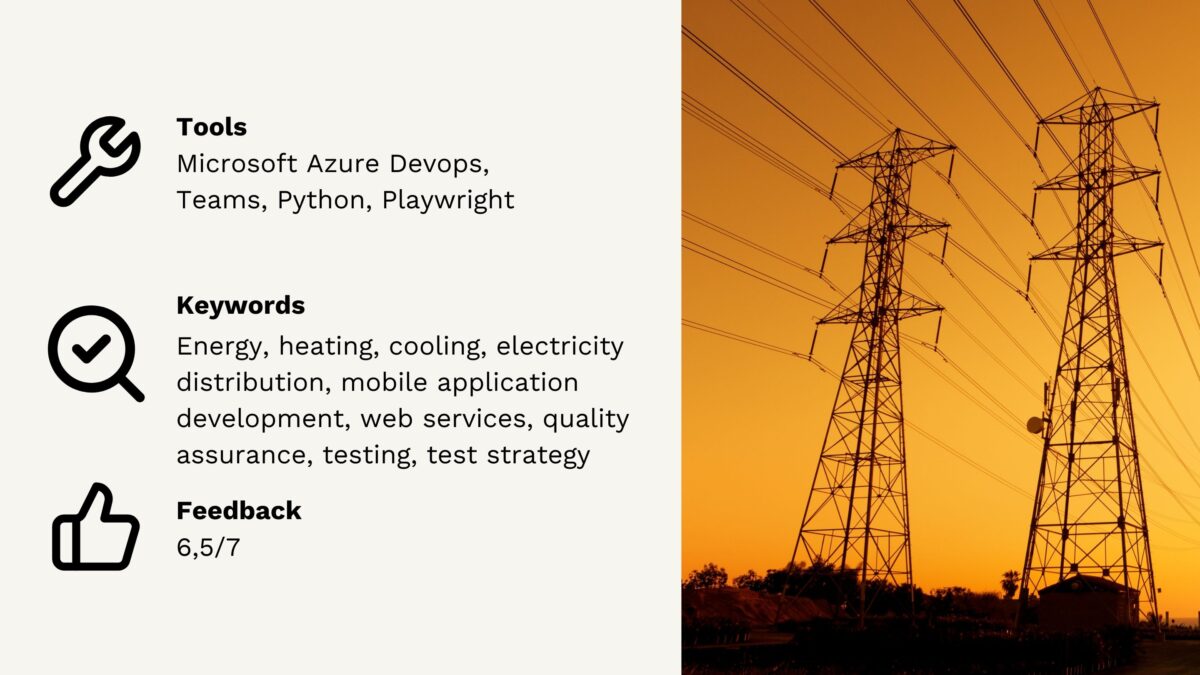
Why did the client choose VALA?
The client was making significant investments in digital development, which made a focus on quality assurance and internal capabilities timely. Initial observations highlighted the need for concrete improvements in quality development, and the client saw VALA as the best partner to support this transformation.
What challenges did we address?
Initially, testing was under-resourced, and end-to-end system testing had not been considered—testing was only conducted at the team level. We needed to carefully plan how testing activities could also be carried out by the application team and how we could integrate end-to-end testing into the process.

Why is quality important?
In recent years, consumer behavior has changed significantly due to fluctuations in electricity availability and pricing. This has revealed quality-related challenges in older systems and created new needs for both users and the company, enabling the development of new services.
End-to-end (E2E) system testing is essential to ensure that all components function together seamlessly.
Software and hardware errors can lead to fines in the energy market, making it crucial to minimize the risk of failures.
What did we do in practice?
We participated in test automation and the overall development of testing processes. Before our involvement, development teams had already been conducting both manual and automated testing. Our role was to expand testing efforts and promote collaboration across teams. Additionally, we took on a supporting role in quality assurance, acting as generalists across different systems and producing test data.
Furthermore, we created a test strategy for the client and supported its implementation across development teams, ensuring that everyone had a clear responsibility for quality improvement.
What business benefits have we been able to contribute to?
The professional execution of acceptance testing ensures that systems released to production operate with higher quality and reliability.
Distributing testing tasks efficiently across team boundaries and involving application teams leads to better test coverage and, consequently, improved quality.
A clear test strategy provides structure to the overall testing process and clarifies responsibilities, which enhances efficiency and ultimately improves quality.
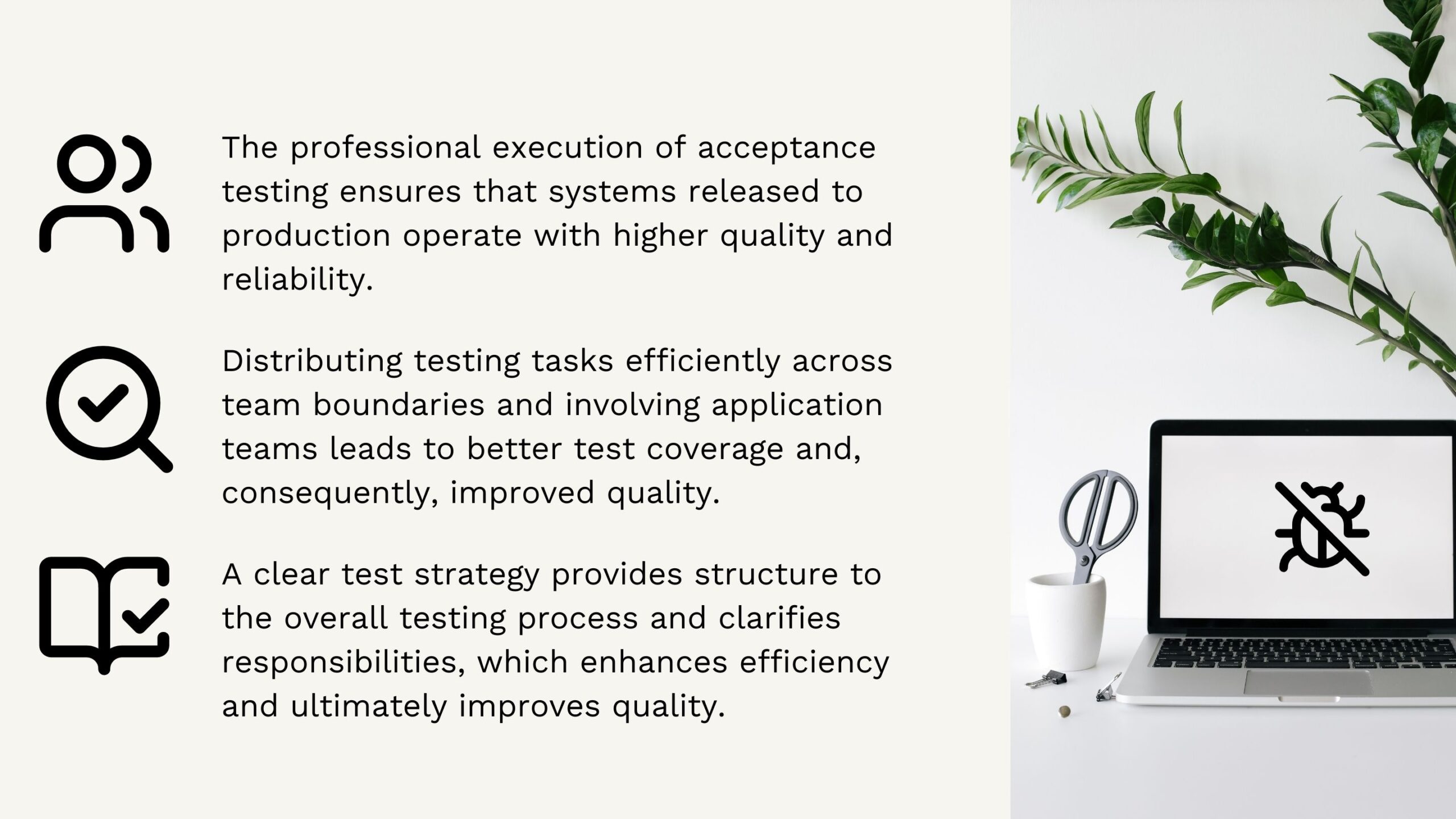
Feedback
We have received excellent feedback from the customer. VALA’s experts have received an average rating of 6.5/7 for their work.
